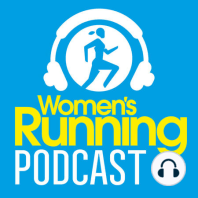44 min listen

Ep 44. Women's Running Workshop. 14. Heart rate training
Ep 44. Women's Running Workshop. 14. Heart rate training
ratings:
Length:
60 minutes
Released:
Jun 17, 2021
Format:
Podcast episode
Description
Welcome to episode 44 of the Women’s Running Podcast and our 14th workshop. This episode is our virtual Vitality 10K debrief: we’ve got a LOT to unpack here. We talk about our 10K, and annoyingly listening back to this I say that we “failed”. We didn’t fail, we did the damn thing, but we didn’t do what we promised ourselves we would do. So we chat about that and tactics to avoid lying to ourselves in the future. The big discussion point here is that we’ve got a half marathon coming up on 15th August and we need to give ourselves a big talking to, and we need to prep properly for what will be a warm race. So I introduce training using heart rates: specifically training in zone 2 of our heart rates. And this makes us both feel better, because – basically – it sounds easier, but clever science means it’ll make us better runners! Hurrah! Here’s the science bit. The common calculation used to determine your maximum heart rate (MHR) is 220 minus your age. So a 35-year-old runner would have a MHR of 185. A more recent equation is [208 – (0.7 x age)]. For a 35-year-old runner, this works out as 183.5.Once you have your maximum heart rate, you can use this to determine the training zones you should be trying to stay within on your runs. ● Zone 1: Very light, 50% to 60% of MHR - Recovery runs● Zone 2: Light, 60% to 70% of MHR - Easy runs● Zone 3: Moderate, 70% to 80% of MHR - Longer tempo runs● Zone 4: Hard, 80% to 90% of MHR - Interval training● Zone 5: Very hard, 90% to 100% of MHR - Very short intervalsA well-rounded training programme should see runners working in all training zones at different points in their week, but with the majority of their training done in zones 1 and 2. Zone 2 runs use predominantly slow twitch muscle fibres whereas a faster run will start to use fast twitch fibres. Slow twitch muscle fibres are full of mitochondria (your cell power banks) and capillaries, this means that the muscle gets a better blood flow and with training becomes more efficient at using this extra oxygen supply as energy. Plus it reduces chances of injury. A fitness tracker or smart watch should help you immeasurably here, if you have one. Podcast listeners can claim the best discount we have for membership to Women’s Running, which is 35% off. That’s less than £2.95 a month! And for that you get our brilliant magazine, and you also get loads of money off the sorts of stuff you love, like lovely kit, nutrition and class memberships. Enter WRPOD at the checkout for your discount. Come and join Women’s Running – we’d love to have you with us!Support the show (https://www.patreon.com/bePatron?u=67575412)
Released:
Jun 17, 2021
Format:
Podcast episode
Titles in the series (100)
Ep 1. Anna McNuff, legendary barefoot adventurer by The Women's Running Podcast